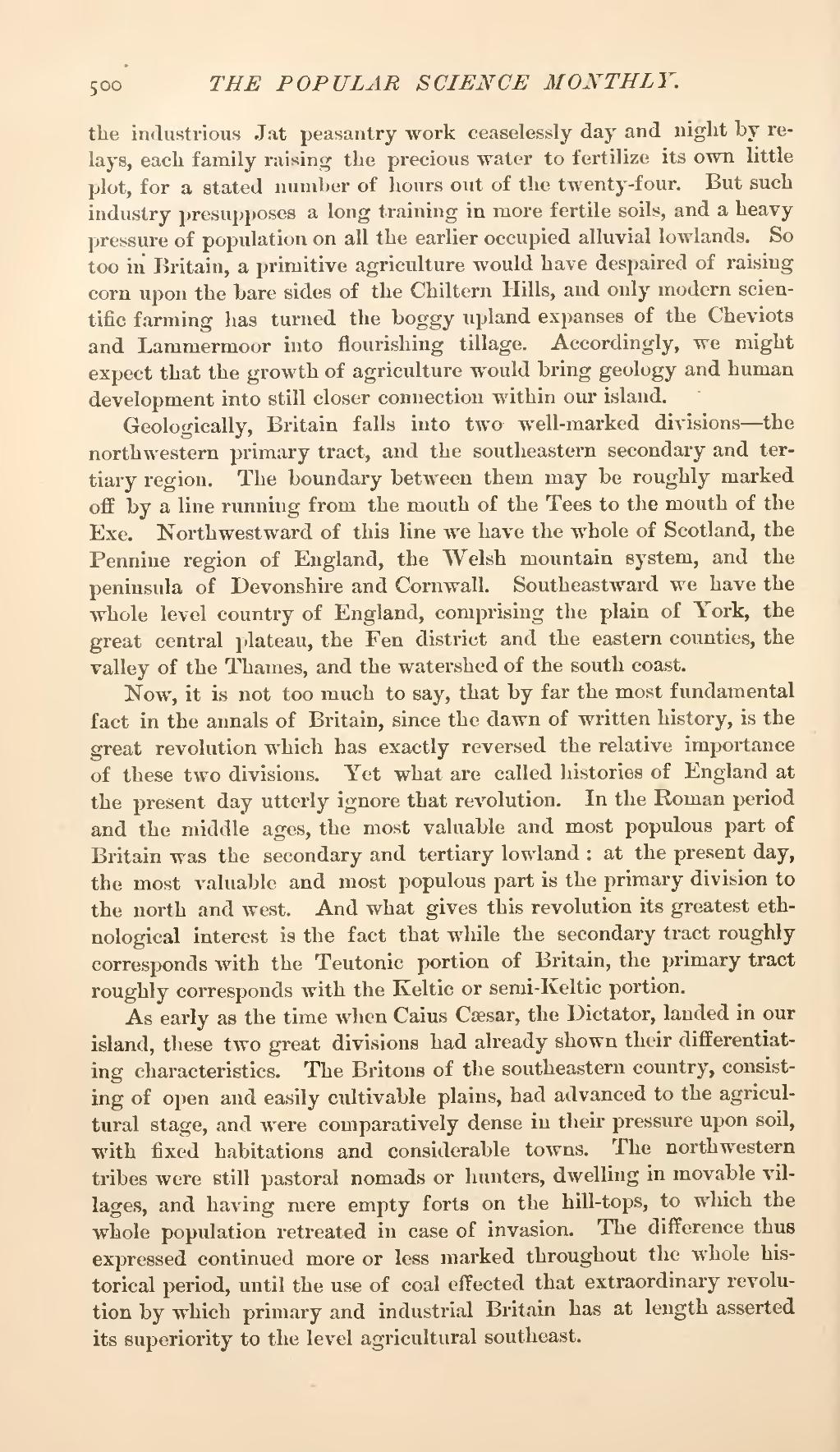the industrious Jat peasantry work ceaselessly day and night by relays, each family raising the precious water to fertilize its own little plot, for a stated number of hours out of the twenty-four. But such industry presupposes a long training in more fertile soils, and a heavy pressure of population on all the earlier occupied alluvial lowlands. So too in Britain, a primitive agriculture would have despaired of raising corn upon the bare sides of the Chiltern Hills, and only modern scientific farming has turned the boggy upland expanses of the Cheviots and Lammermoor into nourishing tillage. Accordingly, we might expect that the growth of agriculture would bring geology and human development into still closer connection within our island.
Geologically, Britain falls into two well-marked divisions—the northwestern primary tract, and the southeastern secondary and tertiary region. The boundary between them may be roughly marked off by a line running from the mouth of the Tees to the mouth of the Exe. Northwestward of this line we have the whole of Scotland, the Pennine region of England, the Welsh mountain system, and the peninsula of Devonshire and Cornwall. Southeastward we have the whole level country of England, comprising the plain of York, the great central plateau, the Fen district and the eastern counties, the valley of the Thames, and the watershed of the south coast.
Now, it is not too much to say, that by far the most fundamental fact in the annals of Britain, since the dawn of written history, is the great revolution which has exactly reversed the relative importance of these two divisions. Yet what are called histories of England at the present day utterly ignore that revolution. In the Roman period and the middle ages, the most valuable and most populous part of Britain was the secondary and tertiary lowland: at the present day, the most valuable and most populous part is the primary division to the north and west. And what gives this revolution its greatest ethnological interest is the fact that while the secondary tract roughly corresponds with the Teutonic portion of Britain, the primary tract roughly corresponds with the Keltic or semi-Keltic portion.
As early as the time when Caius Cæsar, the Dictator, landed in our island, these two great divisions had already shown their differentiating characteristics. The Britons of the southeastern country, consisting of open and easily cultivable plains, had advanced to the agricultural stage, and were comparatively dense in their pressure upon soil, with fixed habitations and considerable towns. The northwestern tribes were still pastoral nomads or hunters, dwelling in movable villages, and having mere empty forts on the hill-tops, to which the whole population retreated in case of invasion. The difference thus expressed continued more or less marked throughout the whole historical period, until the use of coal effected that extraordinary revolution by which primary and industrial Britain has at length asserted its superiority to the level agricultural southeast.
